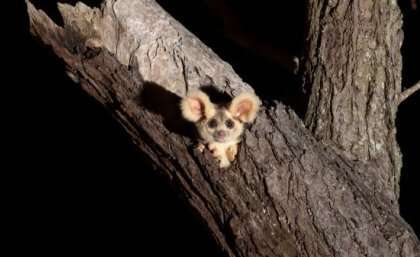The greater glider is one of the native species severely impacted by the 2019-2020 bushfires. Credit: Josh Bowell
Scientists have put a dollar figure on the cost of recovery and restoration of native flora and fauna after the 2019–2020 summer bushfires.
Research led by The University of Queensland and WWF-Australia found an investment of $16 billion a year is needed to restore habitat across 16 million hectares in southern Australia, to prevent species extinction.
Dr. Michelle Ward from UQ's School of Earth and Environmental Sciences and WWF said the study pinpointed 114 priority species, along with a mechanism to offset part of the cost through the carbon market.
"The fire season hit native plants and animals already under threat of extinction from habitat loss," Dr. Ward said.
"We urgently need a restoration program to give these priority species a chance to recover, because more destructive fires are now a mainstay in Australia, but I am hopeful.
"Our research shows an annual investment of $16 billion could restore 65% of fire-impacted species habitat.
"Restoring 95% would cost $73 billion per year."
UQ's Professor James Watson said while it appeared costly, the work offered benefits beyond biodiversity conservation.
"Restoring fire-damaged land could see up to 291 megatons of carbon dioxide sequestered," Professor Watson said.
"That could make around $253 million per year in carbon market revenue—a huge win for nature and for the climate.
"Priority should be given to areas most likely to provide cost-effective benefits to species.
"And invasive species such as weeds, deer and pigs also need urgent removal, along with replanting and stopping native forest logging."
Dr. Ward said habitat restoration should be accompanied by ambitious goals to protect remaining intact ecosystems.
"While we invest in replanting, weeding and appropriate fire management we also need to prevent further degradation of ecologically and culturally important places," she said.
"This requires a big investment and an even bigger government commitment.
"But our research shows that restoring degraded habitats is both attainable and could provide massive co-benefits."
The research is published in Environmental Research Letters.
More information: Michelle Ward et al, Restoring habitat for fire-impacted species' across degraded Australian landscapes, Environmental Research Letters (2022). DOI: 10.1088/1748-9326/ac83da
Journal information: Environmental Research Letters
Provided by University of Queensland
























